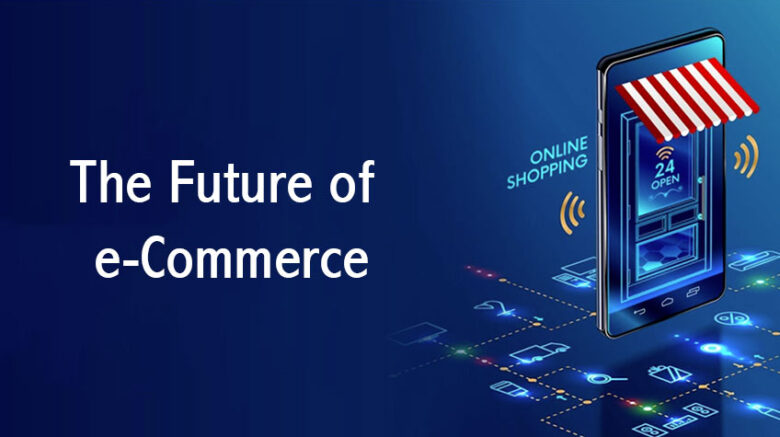E-commerce has grown tremendously in recent years, and there is no sign of that growth slowing down anytime soon. As people increasingly have access to the internet and carry their mobile phones, more and more people are turning to online shopping. This is causing traditional stores to strengthen their online presence, while at the same time, new brands are emerging that sell exclusively online. Convenience, low prices, and the ability to shop from almost anywhere are factors that are driving this steady growth. Even though people’s shopping habits are changing, e-commerce remains the most important part of global commerce.
Mobile Commerce Is Leading the Way
People are increasingly using their mobile phones to shop. Today, people expect websites to work well on mobile devices, pages to load quickly, and the checkout process to be easy. In the coming years, e-commerce trends will change even more due to the development of mobile commerce (m-commerce). Companies are making their websites and apps mobile-friendly so that people can easily browse items, compare prices, and buy them. The process is also now easier and more secure thanks to built-in mobile payment options such as Apple Pay, Google Pay, and digital wallets.
Personalization Will Become the Norm
As data collection methods and artificial intelligence (AI) technologies evolve, more sophisticated, personalized shopping experiences are emerging. E-commerce sites use algorithms to observe how people use them and make product recommendations based on a person’s preferences. Companies are trying to make their customers feel valued through personalized email campaigns and landing pages. This trend is likely to continue as companies invest more money in developing tools to provide each customer with a highly personalized experience, making them happier and more likely to buy.
Voice Shopping will Become More Popular
Tools that you can talk to, like Amazon Alexa, Google Assistant, and Apple Siri, are changing the way people shop. Voice commerce, also known as video commerce, allows people to find products, compare prices, and buy with simple voice commands. Smart home devices are expected to become more common, meaning more people will use this hands-free way to shop. Voice commerce is still new, but it’s already making things a lot easier, especially when you want to reorder a popular item or make a quick purchase. Soon, more businesses will adapt their content and sales approaches to make voice search work.
Augmented Reality is Making Online Shopping Even Better
Augmented reality (AR) is becoming an increasingly important part of online shopping, as it allows customers to see products in a more realistic way. Augmented reality allows people to see how an item will look in their home or how a piece of clothing will fit them before they buy it. This technology reduces uncertainty, increases buyer confidence, and reduces returns. The fashion, furniture, and cosmetics industries are among the first to adopt AR. As the technology becomes more accessible, expect to see more brands using AR in their online purchases.
Sustainability is Influencing People’s Purchasing Behavior
As more people are concerned about the impact their purchases have on the planet, e-commerce businesses are feeling the need to change their business practices and become more environmentally friendly. That means using eco-friendly packaging, offering shipping options that don’t add to your carbon footprint, and sourcing your products in a fair way. Consumers who care about the environment trust and choose brands that are honest and take sustainability seriously. Sustainability will not only be a popular trend in the coming years but also a necessity for businesses that want to stay competitive.
Faster and More Flexible Delivery Options
Customer standards have changed; they want fast and reliable shipping. Today, many customers expect same-day or next-day delivery. To meet this demand, online retailers are investing in developing better transportation systems and logistics networks. Retailers are exploring options such as curbside pickup, local warehouse fulfillment, and drone delivery to make things faster and more flexible. The focus on shipping will continue to change as businesses compete to reduce shipping times and improve the overall customer experience.
The Rise of Social Commerce
Social media sites are no longer just for posting photos and updates; they have also become popular places for online shopping. Social media sites like Instagram, Facebook, TikTok, and Pinterest are changing the way people find and buy products by adding shoppable posts, in-app checkout pages, and live shopping events. When social media and shopping come together, it’s called “social commerce.” It allows brands to connect with customers in a more authentic and more profound way. As social networks continue to add new features, social commerce is becoming an increasingly important part of online shopping.
Cross-border eCommerce Offers More Opportunities
Thanks to globalization and improved shipping services between countries, online stores can now more easily reach customers in other countries. Cross-border eCommerce is growing rapidly as people search for unique items and get better deals from sellers in other countries. Businesses are adapting by offering multiple currencies, clear shipping policies, and localized websites. As trade barriers continue to decline globally, cross-border sales will become even more important to online retailers’ growth plans, allowing them to reach new markets and customers.
Conclusion
E-commerce is rapidly changing due to new technologies and changes in the way people buy. Current trends in e-commerce, such as mobile shopping, personalized experiences, eco-friendly practices, and globalization, will define the future of retail. Companies that follow these trends and prioritize innovation, customer satisfaction, and operational efficiency will thrive in the coming years. The coming years will bring even more exciting changes as e-commerce becomes more and more a part of our daily lives and the way we shop continues to change.
FAQs
1. What does the future of e-commerce look like?
Trends such as mobile commerce, personalization, augmented reality, and sustainability will change the future of e-commerce, making shopping easier, more immersive, and more customer-centric.
2. Why is mobile shopping important?
Mobile shopping is important because it shows that more and more people are shopping on their phones. This means that businesses need to ensure that their websites and apps work better on mobile phones.
3. How does personalization impact online shopping?
Personalization can improve the customer experience by showing them relevant products and content based on their preferences. This makes customers happier and more likely to buy something.
4. What does sustainability have to do with online shopping?
Sustainability is becoming increasingly important to customers. That’s why e-commerce businesses are using environmentally friendly methods and being transparent about the origins of their products to attract and retain customers.
5. Is voice shopping the next big thing?
Voice commerce is a growing trend that allows you to shop hands-free. As voice technology improves, it’s likely to become a major part of the way people shop online.




